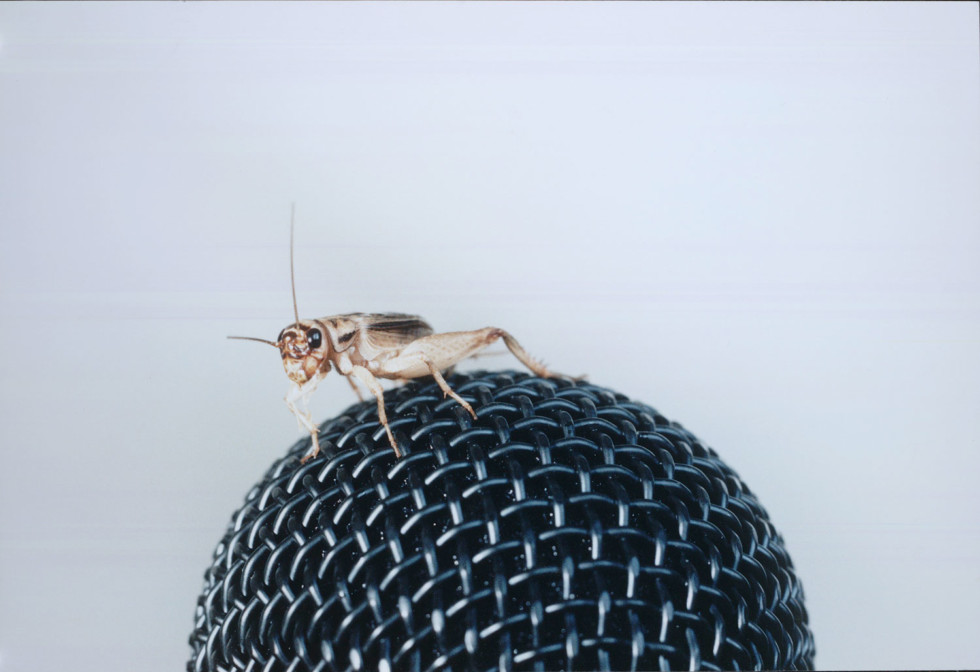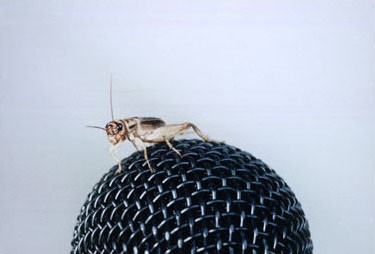
Henrik Håkansson, Untitled, 1996 © Henrik Håkansson Bildupphovsrätt 2017
c/o Riddarhuset
Henrik Håkansson
5.5 2003 – 30.6 2003
Stockholm
At the same time, we have to accept that the world, and to some extent art, is complicated today – it would appear naive and romantic to pretend otherwise. It seems like we have forever lost our innocence, and our ability to be at one with nature. And again, to mourn the lost paradise, the innocent time before the Fall, when we ate of the fruit of knowledge – is romantic in itself.
One of the central themes of Henrik Håkansson’s art is this very attempt to understand birdsong. His works have the character of scientific experiments. Using advanced technical equipment, often including small security cameras, he studies nature, and especially certain species and their behaviour. The films and sound recordings, some of them live broadcasts, which are presented in his exhibitions are also attempts to communicate. Håkansson appears to want to make nature visible – the nature to which man, the cultural being, has an increasingly distanced relationship. And perhaps Henrik Håkansson even wants to establish a communicative link with this other: animal and nature.
The technical equipment Håkansson uses to monitor and, in other exhibitions, display nature is also in strong contrast to this nature. While enabling us to approach nature and wildlife more closely, the technology also reveals the distance between us and nature. Our experience of it is mediated. In 1997, Henrik Håkansson created an environment for cocoons and butterflies in the Nordic Pavilion in Venice. He says that most visitors preferred to watch the TV monitors that showed the images from the security cameras, rather than looking straight at nature. Is the image of reality more interesting than unmediated reality? Are things made more significant by being on TV? The microphones and cameras surrounding the insects and wildlife in Håkansson’s works sometimes remind us of politicians and movie stars at a press conference. Nature films and TV programmes often focus on how a particular species or sensitive ecosystem is threatened by human exploits.
Henrik Håkansson’s observations of the animal kingdom are radically different from the nature programmes on TV, however, which show the most hidden miracles of nature – whales giving birth to their young in the Arctic Sea, a frog in the rain forest aiming its tongue at a fly, in slowmotion. Scenes lasting only a few seconds, but which have taken months, maybe even years, for the film crew to discover, get close to and capture on film. These images are habitually accompanied by a narrator explaining what we see, why the animals are behaving in a certain way – often also informing us that they are threatened with extinction. Everything is accessible and explained. Henrik Håkansson’s works provide no explanation of what we are seeing or hearing. Nor are the images adjusted or edited like TV films. Instead, viewers have to take the part of the researcher, who has to wait, observe and try to interpret.
The scientific character of many of Håkansson’s works does not bar them from evoking a strong atmosphere. In the series Sweet Leaf, which was first exhibited at Galerie für Zeitgenössische Kunst in Leipzig, the viewer encounters, among other things, a large video projection showing a swarm of wasps circling around a wettex cloth soaked in squash. The intensity of the movements and buzzing is invasive and threatening. Although the wildlife Håkansson displays is mediated, it is a testimony of the wild, the untamed, that is both alluring and frightening to man. This atmosphere is further enhanced by the music that Håkansson often incorporates in his work.
The House of Nobility, Riddarhuset, was built in 1641-1674 after the drawings by the French architect Simon de la Vallé (who was, unfortunately, killed in a duel already in 1642). Construction work continued under the German master stonemason Heinrich Wilhelm, and the facade was composed by the Dutchman, Joost Vingboons. The stairwell and the roof are both by Simon de la Vallé’s son, Jean; the monumental staircase in darkbrown limestone dominates the central section of the interior. The parklike garden that opens onto the water of Stockholms Ström is a variation of the French park, with nature arranged in strict geometric patterns. The entire building and the park are permeated with human culture and history. Hence, they form an ideal contrast to Håkansson’s work.
Magnus af Petersens
Curator of Contemporary Art, Moderna Museet

